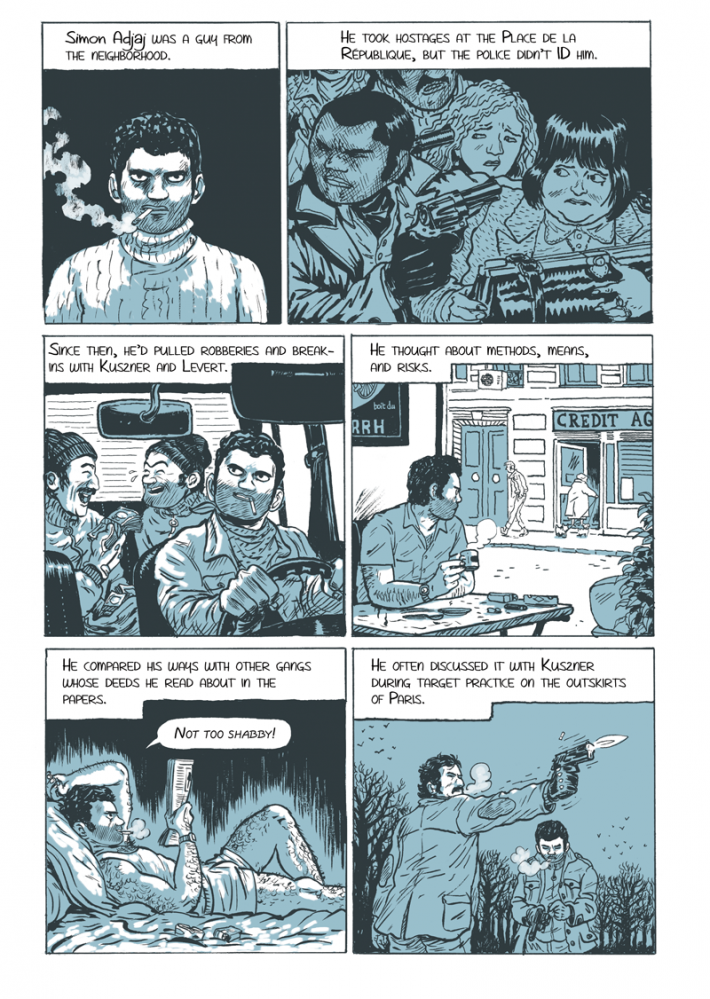A Game for Swallows is getting lots of local and international love. It made World Literature Today‘s year-end Notable Translations list for the year. Huge congrats to all the authors and translators so honorably mentioned!
Nicole Cipri at Gozamos, a Chicago culture blog, makes astute observations about Abirached’s use of negative space on both thematic and pictorial levels.
Such emptiness inspires a sort of pensiveness, an uncertainty. It reminds us of our own smallness and insignificance, particularly when viewed through the wide lens of history…
It’s telling, then, how much negative space Zeina Abirached uses in her graphic memoir, A Game for Swallows. Uncertainty and worry infect each page. Abirached was born during the Lebanese civil war, a conflict that lasted nearly fifteen years and claimed 120,000 lives…
The artwork is full of strong lines and patterns, bordering on whimsical, and reminiscent of Islamic geometric designs. We never see a bomb, a gun, or a pool of blood, perhaps because this is a child’s recollection. Instead, there is that negative space, that sense that one lacks control.
The Provo, Utah Library blog says:
This black and white look at one night of life in war-torn Lebanon is a touching, important book, as it tells the stories of not only the children but also the neighbors and how they’ve been impacted by the war.
Thanks to Words Without Borders and PEN America for believing in this book from the beginning, and running excerpts that helped convince publishers to take it on. Thanks much to Nicolas Grivel, the French Voices grant program, the editorial team at Lerner, and author Zeina Abirached herself for making this book happen!
